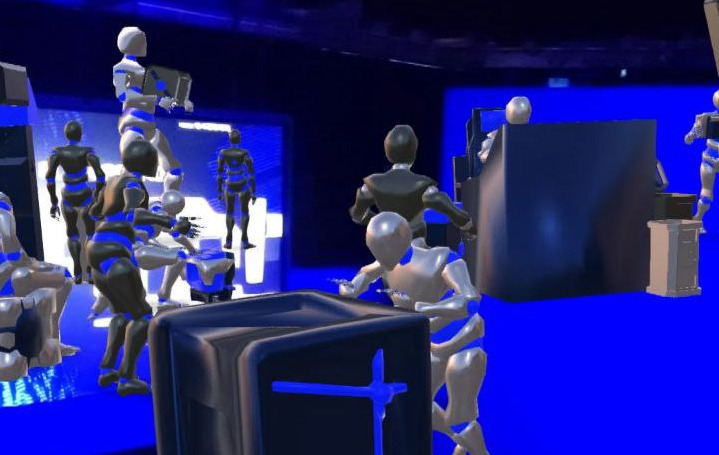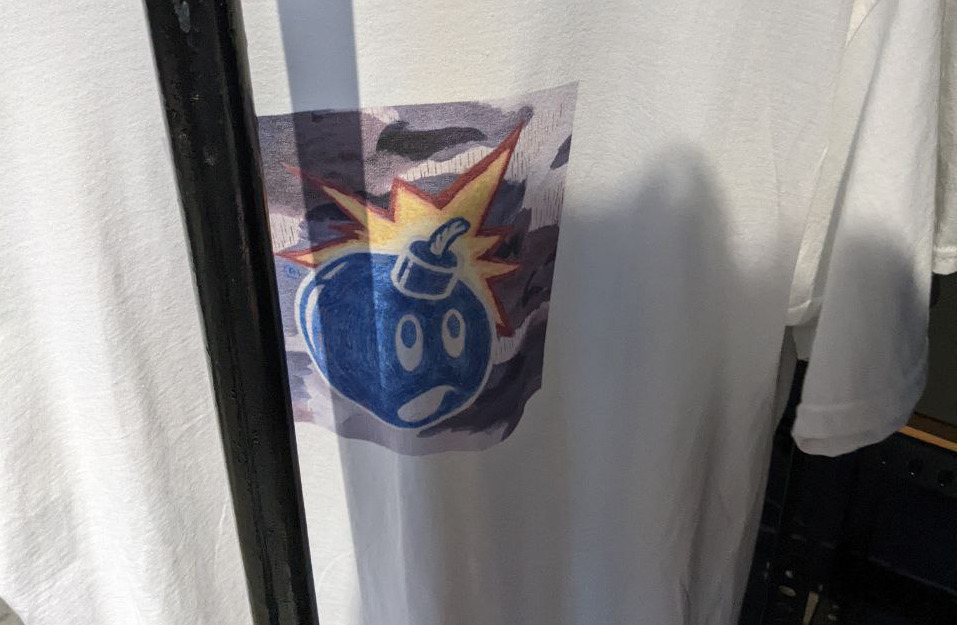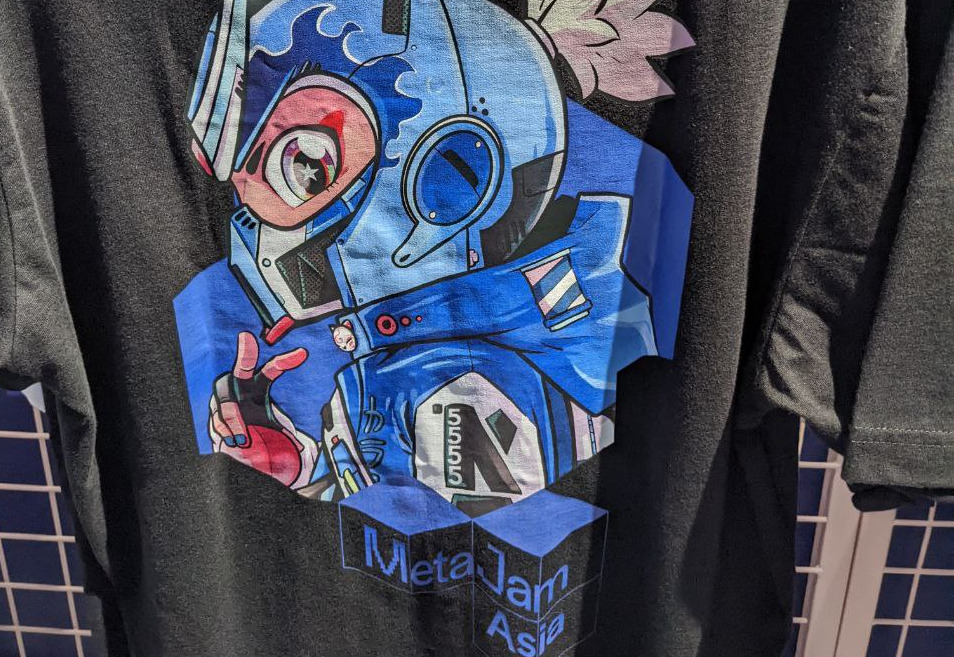Table of Contents
MetaJam Asia, the latest Web3 event to land in Singapore, attempts to lay its claim as the definitive space to introduce Web3 to the rest of Asia and the world. Our writer shares his experience visiting the exhibition and why he believes MetaJam falls short of being the definitive Web3 space in its homeland.
With public interest in NFTs growing, there has been an increase in demand for NFTs to bridge over into the “real world”, be it in the form of real world utility or events. Singapore has seen a number of NFT pop-ups and exhibitions since the end of last year, with Right Click + Save, organised by Coinhako and Appetite, kicking things off in November last year, followed by NFT pop-ups in Funan debuting during Singapore Art Week in January as a showcase of art native to the NFT space to the public.
At the same time, with pandemic measures easing, exhibitions have been making a comeback in the traditional world, with the National Gallery of Singapore’s Nam Jun Paik: The Future is Now being a hit on Instagram stories and Attack on Titan: The Exhibition seeing many fans of the beloved franchise visiting to learn more about the work that goes into the series. MetaJam Asia, in its attempt to incorporate a combination of the concepts above, is none of those things. At least, that was my initial impression upon seeing their Twitter profile.

At first glance, the bio appears to explain what the “festival” is about: all things Web3. However, upon closer inspection, the phrasing of the bio comes across as an attempt to jam-pack a myriad of buzzwords in with little understanding of what they really mean. Are NFTs and Game-Fi not a subset of Web3? What is a “global NFT” anyway? Are NFTs not inherently global since they operate on the blockchain? By trying to include everything the event is about in a single sentence, MetaJam’s bio only confuses readers more, leaving the impression that even they are not really sure of the purpose of the event.
Scrolling through their Twitter does not reveal much either, as a quick glance through their feed reveals an impressive lineup of collaboration partners and… nothing much else. On their website, the most informative of text reveals the purpose of MetaJam…

… but again, the ambiguity of these phrases suggests a lack of sincerity on the organisers’ part to educate the general public. Across the board, Metajam’s online presence seemed rather unfocused and lacking in direction, which is why I declined to claim my whitelist spot for a Metapass, an NFT ticket into their physical space which felt expensive for what they were offering.
The actual “festival”
Poor marketing does not necessarily correlate to a poor quality of product, and one might be tempted to conclude that the amount of capital raised from Metajam’s blevy of corporate partners would result in a quality exhibition like the ones mentioned previously. After all, Invade, one of Metajam’s organisers, has organised successful events in the past, such as the wildly popular Artbox.
It was with this in mind that I decided to take up my friend’s offer of a spare season pass that would grant me entry into the exhibition. Walking through MetaJam’s narrow corridors, however, my hopes of being proven wrong were slowly dashed.
From the outset, the space feels strangely small, in part due to the location chosen to host the exhibition. At the entrance stood a staff member who proceeded to show my friends and I what the space had to offer, such as a magnifying glass that reveals 1s and 0s behind a JPEG (conveying the idea that the blockchain is what gives NFTs legitimacy), as well as a pair of AR glasses that revealed tiny humanoid “workers” working behind the scenes to get the blockchain running, a metaphor for nodes and validators. While these did feel a little too literal and simplified, it nonetheless offered a model illustrating the inner workings of the blockchain that was easy to understand, albeit questionably.

The simplicity of the explanations, however, ends there, as this segment is followed by a wall of text explaining the technical workings of blockchain technology and crypto wallets.

As the explanations for each topic are not limited to one slide, visitors would need to stand at this section for some amount of time to read them to completion. The text, while going more in depth into each aspect of Web3, feels more appropriate as an article to be read in one’s own time as opposed to material for an exhibition, especially considering the small size of that section.
Opposite this wall of text are some arts and crafts materials, which one can use to create their own custom NFTs. If the wordy explanations on Web3 are meant to go in depth, the arts and crafts section feels heavily shallow, like an out-of-place childrens’ activity.

Main exhibits
Stepping beyond the arts and crafts section leads to the main room, where Karafuru NFTs will immediately greet you from their big LCD screens, with other projects and artworks on smaller screens on the side. While the Karafuru art is drawn really well, it begs the question of what the point of owning an NFT really is when anyone can simply right click and save it to display on a big screen.
Looking at the Profile Pictures (PFPs) on the big screen also misses the point; if PFPs are meant to be virtual avatars, does taking them out of their intended context enhance their appeal at all? I imagined that most people not familiar with crypto would not be convinced of their purpose at all.

Apart from the Karafuru segment, there are traces of something that could have been bigger and better, like Metaverse In Real Life’s (MIRL) well-organised home segment, in line with their ethos of linking real world and metaverse fashion. Tezarekt’s gachapon machine invoked the thrill of obtaining collectibles, demonstrating the idea of assembling your own NFT with various traits to a certain degree. It felt ironic that some of these lesser advertised names visibly had the most care put into them in the exhibition, and experiencing these sections of the exhibition only made the rest of MetaJam pale in comparison.



If you are looking for advertising, however, the section upstairs certainly delivers, as this is where the charade of an educational exhibition ceases and MetaJam overwhelms visitors with a myriad of unabashed advertisements. The first part of this section features a giant wall, displaying a number different PFP projects in a moving projection. While the wall is accompanied by an interactive element where one can push a button to draw the avatars towards them, its purpose feels unclear other than as a gimmick to sustain visitors’ attention towards these NFT brands.
Walking further reveals more big screens with even more advertising, concluding with a small booth offering to print NFTs onto plain T-shirts. Seeing the square shapes of PFPs manifest onto these t-shirts once again felt out of place, and I wondered what would stop me from doing the same thing at Uniqlo at a cheaper price. The custom designs for MetaJam itself felt more appropriate for a T-shirt, showing that art can only shine when contextualised appropriately to its medium.

MetaJam could have been so much more
As I left the tiny two-floor compound of the exhibition, I felt confused about the purpose of MetaJam and how exactly any of its components would onboard members of the public into Web3. Many parts of the exhibition felt shoddy, even by Web2 standards, with several areas utilising paper and static imagery instead of the digital mediums that Web3 exists on.
While MetaJam Asia has clearly succeeded in raising capital by partnering with an impressive list of corporate partners, from Chain Debrief to Karafuru, the shoddy nature of the exhibition fails to reflect this, detrimental not only to visitors of the exhibition but their corporate partners as well. The fact that entry into the exhibition is ticketed at steep prices, with day passes going at S$18 and Metapasses launching at 0.08 Ether, contradicts MetaJam’s stated desire to educate the general public of Web3. Adding on the contents of the second floor, along with the visible lack of knowledge of Web3 on display, and one cannot help but feel that MetaJam’s stated aims appear disingenuous.
Perhaps, if sections like MIRL and Tezarekt could be expanded upon in greater detail, or the concept of the metaverse could be incorporated better (there was a notable lack of VR headsets), the exhibition could transform itself with the remainder of its run, turning into something more innovative and capturing the magic of Web3. Even the bigger names like Karafuru could do more with their displays than mere PFPs on screen, adapting to their real world mediums in more well thought-out ways than simply slapping a JPEG on a big screen.
Whether or not MetaJam Asia is able to innovate beyond its first iteration, however, is something that only time can tell. As with many projects in Web3 that come and go, the test of time serves as the best indicator as to whether MetaJam is here to stay or simply another attempt at capitalising on the Web3 hype.









